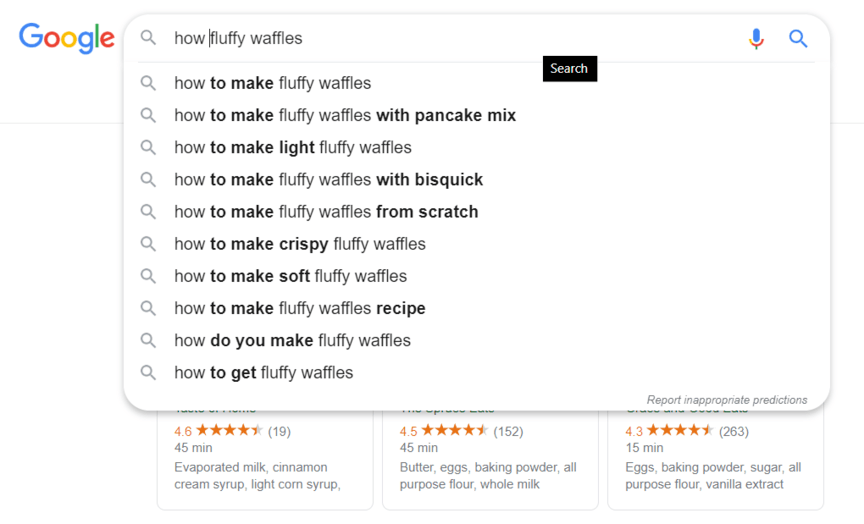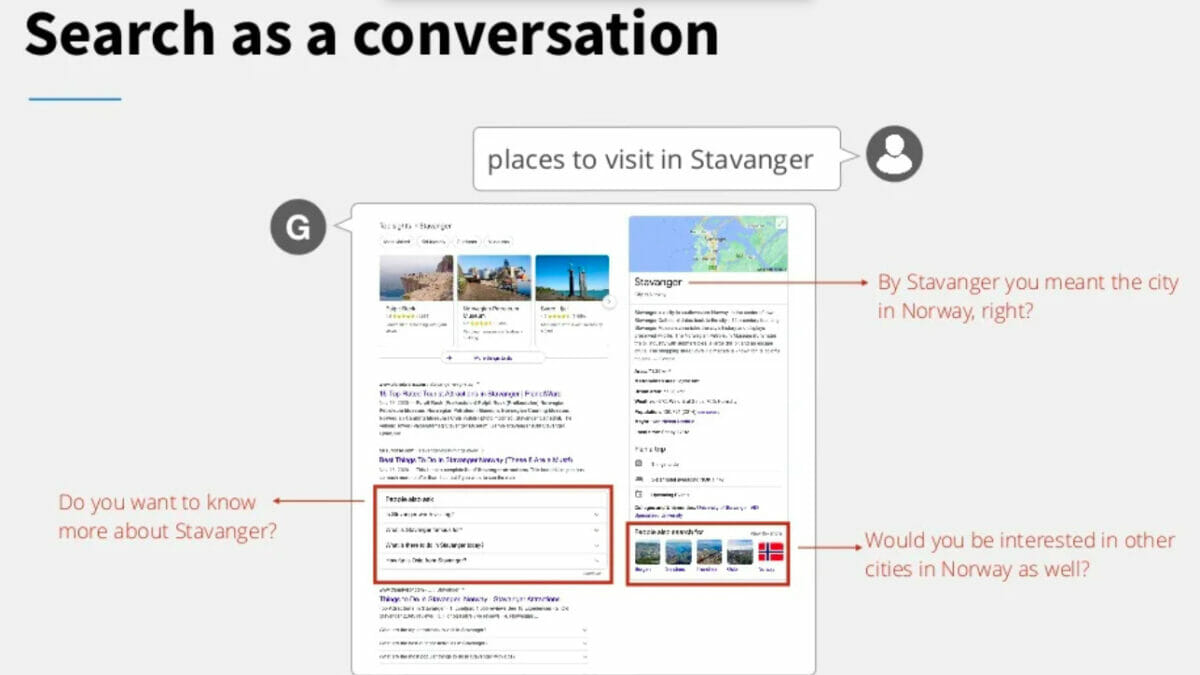If you want your company to succeed, you need an effective SEO plan. Then it's important to analyze the conversational keywords people use on Google to find answers to their most important questions.
Consider things from the perspective of your ideal customer. What search terms will people use to find your goods or services online? And then create a list of the most frequently asked questions about your company. Here are some examples:
- Find a Salon in Miami
- What are the best restaurants in New York?
- The best civil lawyers in California?
- Are there any late-night gyms in the area?
- How do you optimize your website for voice search?
After you've compiled a list of frequently asked questions, it's time to address them directly on your website.
Use concise replies and bullet points wherever feasible to improve your content's readability. Using ten or more steps can cause Google to include a "read more" link to the response box, which may increase your CTR (click-through rate) for standard web SEO or cause Google to provide additional information for people searching using voice.
Using this technique to answer queries might have your content not just optimized for conversational keywords but also highlighted snippets on Google.
Google is always updating its algorithms to improve the quality of search results for its users. Because of this update, searches based on conversational keywords now perform better and provide more relevant results.
What is a Conversational Keyword Search

Conversational keyword searches are questions asked in the style of a natural conversation. Instead of searching "football scores Sunday night," users can simply ask, "what were the football scores yesterday night?" and obtain the right answers.
Users have wasted too much time trying to figure out what words to use in what sequence to acquire all the useful information they want; conversational keyword searches shift the onus of producing relevant results to search engines and content producers, which is exactly what companies like Google want.
How Does Conversational Keywords Impact Content Creation?
In the past, search engine optimization consisted just of strategically inserting a few keywords into a piece of writing to boost its visibility in SERPs. By increasing the frequency with which the keywords occurred naturally, we increased the likelihood that this content would rank well for queries including those keywords.
Conversational search adds a new layer of complexity to the situation.

Today's successful content marketing strategies focus on maximizing a website's visibility in search engine results by reducing the likelihood that users would leave the page in pursuit of a more relevant result. It's simpler to say than to accomplish this. Most content on search results tenth and twelfth pages is poorly written and offers little real value to the user. You need to learn from the mistakes of those who failed and not repeat them.
Prepare Answers For Potential Questions
Predicting the kind of questions most people would ask is the first step in creating content that appeals to the widest potential audience. You should ask yourself some basic questions before writing your content, such as:
- How much background knowledge does the typical individual have on this topic?
- In what ways does this matter in people's everyday lives?
- In what context and at what time would individuals most likely seek this out?
- What steps would you suggest in light of the data I want to present?
- Will the organization of this post provide the reader with all the information they need?
These kinds of queries will put you in the mindset to identify with your made-up reader and build the framework for a piece that may be of use to anybody.
Use Only Natural Language Wherever Possible
Focusing on natural language from a grammatical perspective is another step in anticipating user queries and providing accessible solutions. When organizing your content, it's important to utilize language that a normal person would use.
For example, "How to fix a leaking tap?" is probably more common than "How can I resolve the problem of my leaking tap?" Use consistent terminology across your content: "If your tap is leaking, you can cut off the water supply, remove the knobs & stem, check out for any damages and resemble all the parts.
However, it's often a good idea to include numerous variations on the same question to cover all of your bases.
Assimilate Conversational Search Terms
It's not enough to blindside your readers with a slew of meaningless keywords and search phrases. Writers should instead focus on finding methods to include and answer specific questions that address readers' concerns and interests.

To do this, you might, for example, intersperse the text with hypothetical rhetorical questions that are meant to grab the reader's attention or provide the ultimate, definitive word on the subject at hand:
Think of the question, "Tips to fall asleep faster and sleep better?"
A conversational piece of content with a good chance of showing up in the results can utilize the question as a header, then respond like, "There's no one proper answer in the health-related inquiry." Sleeping on your side, however, is recommended by doctors because it reduces the risk of snoring, helps you breathe easier, and enhances your digestive and circulatory systems.
Adding a section for commonly asked topics is another method to add conversational keywords. It lets you respond to a wide variety of potential search inquiries precisely when you anticipate them being asked.
Using either tactic is similar to how you may normally include keywords in your content; you're just expanding on those keywords to include ideas, phrases, and even whole sentences.
Concentrate on Creating the Design Interesting
Creating high-quality conversational content is just half the battle; you also need to ensure that your target audience can readily find and benefit from it. Maximizing user engagement requires a systematic strategy that can only be developed with the help of both web designers and analytics professionals.
The whole piece should be designed to immediately engage the reader, from the title and body content to the structure and any supplementary visuals. Readers might be attracted to your material using conversational search if you assist them in getting the information they need with the fewest clicks.
Start Conversations

There is a widespread belief, shared by many working in search analytics, that conversational search is the wave of the future for how people will find and use information online. Writers who refuse to adapt will have their work buried deep inside Google's results.
But if you take a closer look, you'll realize that this new world isn't all that different from the one most of us are already familiar with. Creators need to just do what they have always done: focus on what their audiences want and create content that gives it to them.
Conclusion
There you have it! The most helpful steps to incorporate conversational keyword searches into your SEO strategy. With this information in hand, you can better understand your website and its areas for improvement.
You'll see an increase in traffic and SEO ranking when you start implementing your strategy, whether by analyzing the activities of rivals or looking closer to home for on-page search engine optimization.


